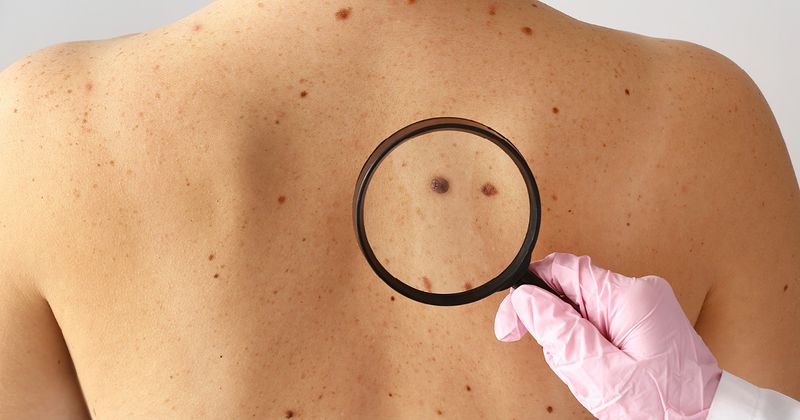USPSTF: Evidence for skin cancer screening is inadequate
Click Here to Manage Email Alerts
Key takeaways:
- There is not enough evidence to assess the benefits and harms of skin cancer screening in asymptomatic people.
- The task force called for further studies that are more reflective of the U.S. population.
There is not yet enough evidence to adequately assess the benefit-harm balance of screening for skin cancer in asymptomatic adolescents and adults, according to a statement from the U.S. Preventive Services Task Force.
The I recommendation statement, published in JAMA, aligns with the task force’s 2016 recommendation on skin cancer screening — defined as a visual skin exam by a primary care professional — in asymptomatic adults. It does not apply to those showing symptoms like irregular moles and skin growth changes or to patients with a family history of skin cancer.

“The task force wanted to see if visual skin exams by primary care professionals reduce complications or deaths from skin cancer in people without symptoms,” Katrina Donahue, MD, MPH, a task force member, said in a press release. “Unfortunately, there is not enough evidence to recommend for or against screening, and health care professionals should use their judgment when deciding whether or not to screen.”
Those at an increased risk for developing skin cancer include older people, men and those who have had many sunburns, according to the USPSTF. People with fair skin, light-colored eyes, blonde or red hair and those with many moles face an increased risk for melanoma, specifically. The task force previously published a separate recommendation in 2018, suggesting behavioral counseling to help reduce risk for the most common type of cancer in the U.S. among those aged 6 months to 24 years with a fair skin type.
Nora B. Henrickson, PhD, MPH, an associate investigator at Kaiser Permanente Washington Health Research Institute, and colleagues conducted an evidence review of 29 articles comprising 6,053,411 people.
All direct evidence on the benefits of screening came from three nonrandomized analyses of population-based skin cancer screening programs in Germany, Henrickson and colleagues noted, and suggested no population-level benefit for melanoma mortality over 4 to 10 years’ follow-up.
In contrast, six studies offered inconsistent evidence on the connections between clinician skin examination and lesion thickness or stage at diagnosis. Additionally, routine clinician skin examination was not linked to increased detection of skin cancer or precursor lesions (five studies) or stage at melanoma detection (three studies), compared with usual care. Similarly, evidence on the connections between clinician skin examination and lesion thickness at detection was inconsistent (3 studies).
The task force also called for future research that is more reflective of the United States in terms of both skin tone diversity and settings that reflect disparities in health care access.
In a related editorial, Maryam M. Asgari, MD, MPH, an associate professor of dermatology and population medicine at Harvard Medical School and director of the high risk skin cancer clinic at Massachusetts General Hospital, and Lori A. Crane, PhD, MPH, a professor in the department of community and behavioral health at the Colorado School of Public Health, wrote that “there is a need to advocate for funding and prioritization of high-quality, US-based randomized clinical trials of the effectiveness of clinician screening on early detection of skin cancer, with attention to serving the needs of the diverse U.S. population.”
“Importantly, efforts should be made to identify high-risk subpopulations who would benefit from screening and low-risk subpopulations for whom asymptotic screening may constitute low-value care,” they wrote. “Last, ways should be found to enhance counseling for primary prevention of skin cancer by reducing UV exposure, particularly among youth.”
References:
- US Preventive Services Task Force (USPSTF). JAMA. 2023;doi:10.1001/jama.2023.4342.
- US Preventive Services Task Force (USPSTF). JAMA. 2023;doi:10.1001/jama.2023.3262.
- US Preventive Services Task Force (USPSTF). JAMA. 2023; doi:10.1001/jama.2023.3259.
- U.S. Preventive Services Task Force issues final recommendation on screening for skin cancer. https://www.uspreventiveservicestaskforce.org/uspstf/sites/default/files/file/supporting_documents/skin-cancer-screening-final-rec-bulletin.pdf. Published April 18, 2023. Accessed April 17, 2023.
